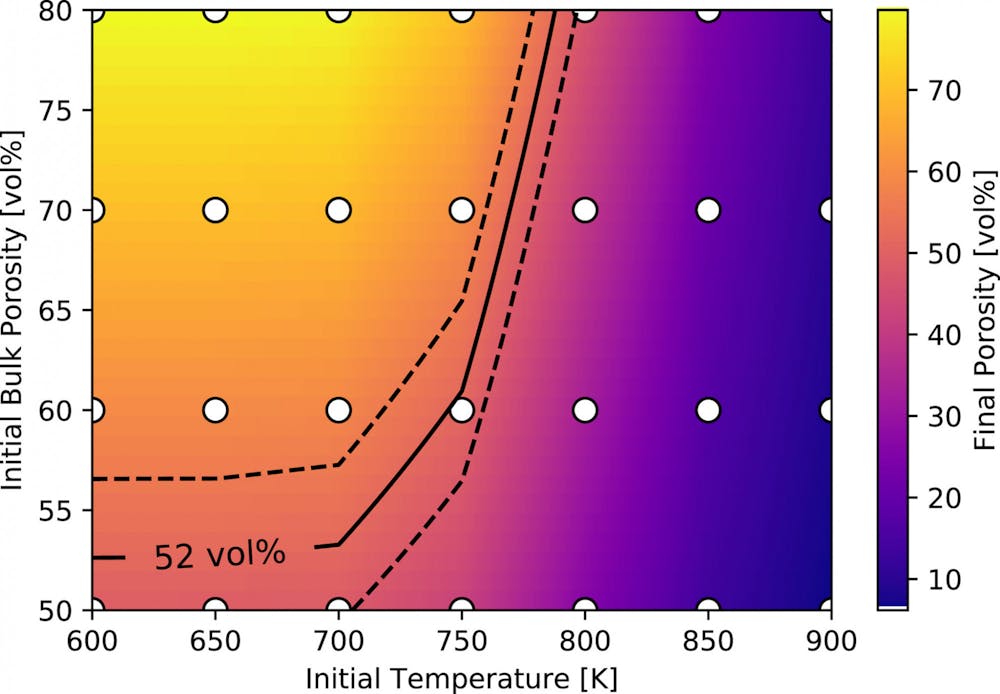Researchers from Brown and Purdue University have discovered that the asteroid known as Psyche is likely composed of less metallic iron than scientists originally presumed, and that it may include other hidden rocky components.
NASA is planning a mission to visit Psyche in 2026. Lead author of the study Fiona Nichols-Fleming GS was inspired to study Psyche because there are several “big questions” regarding Psyche to address “before (NASA) actually gets there and gets to do all these great observations.”
Psyche is an M-type asteroid, part of a group of asteroids with highly reflective surfaces that indicate a metal-rich composition, Nichols-Fleming said. However, in recent years, scientists have discovered that Psyche is only half as dense as expected for a supposed giant mass of iron. If the asteroid’s composition was mostly iron, Psyche would have to be about 52% empty space, according to the new density measurements.
Nichols-Fleming and Alex Evans, co-author of the study assistant professor of Earth, Environmental and Planetary Sciences, decided to examine the likelihood that the iron body asteroid could maintain the required 52% porosity to match this density. The team found that “it is not possible for it to be maintained.”
As Nichols-Fleming explained, an initial asteroid at its starting temperature is conductively cooling, or radiating heat out of its surface. If it is warm enough, material can become malleable and pore space can be removed during this process. “Imagine leaving butter out on your counter that is still solid, poking a hole in it and then pressing on it a little bit. If it's warm enough, you can kind of close that hole back up,” Nichols-Fleming said.
With this concept in mind, Nichols-Fleming devised a computer model that would determine the critical temperature at which Psyche’s 52% porosity could be maintained. Her study revealed that Psyche would have had to cool to about 800 Kelvin before gaining the high porosity required to match the observed low densities of metal-rich asteroids.
This temperature is “really quite cold for something like the interior of an asteroid,” Nichols-Fleming said. “Porosity-adding events occurred early on in the solar system evolution, but at that point in time, Psyche in its initial state would have just been too warm and would not have been able to hold onto that porosity.”
This data shows that Psyche’s low density cannot be due to empty space alone. In this study, Nichols-Fleming suggests that it is instead due to a “hidden rocky component.”
The researchers hypothesized ferro volcanism as a potential explanation for why Psyche would have a metal-rich surface without an entirely metal-rich body. “You could have a body that was a two-layer structure, … a more rocky mantle and then an iron core,” Nichols-Fleming explained. Under the right conditions, the iron core could erupt metal onto the surface, she added.
Professor Emeritus of Geological Sciences Peter Schultz proposed a different mechanism by which Psyche acquired its metallic surface. In his previous experiments, Schultz has investigated what happens when asteroids are impacted at high speeds. Contrary to previous theories that projectile material would be blown away, he found that it could plaster itself onto the surface of the celestial body it hits.
“Psyche could have started, as people have suggested, (as) an iron core, but then it could have collected its own (rocky) shell through repeated impacts,” Schultz said. According to his theory, Psyche could have then undergone a “giant impact” that dug into its metal core and redistributed that metal across the surface.
The bright metal surfaces of M-type asteroids are “either because of ferro volcanism or a result of impacts that may be exposing a metallic core or a more metallic rich subsurface,” Schultz said.
Regardless of which model holds true, “this is how science works,” Schultz said. “You have multiple models that you’re trying to create, and these models help focus the questions that you’re going to ask when you start examining the body.”
With only one model, scientists could get blindsided and ask the wrong questions. Having more than one theory is critically important, “especially for a mission like Psyche because Psyche is turning out to be one strange beast,” he added.
Studying Psyche and other M-type asteroids can provide information about the early solar system.
“An asteroid is one piece of the evolution of the solar system puzzle. How exactly it fits in, we don’t know yet,” Evans said. “If for some reason Psyche is very highly porous pure iron, I think that either you have perhaps a very unlikely series of events or perhaps we need to reconsider our understanding of the timing of events as they happened very early on in the solar system.”
Acquiring more information about these asteroids will provide researchers with insight into the formation of the solar system, and ultimately, the origin of life, Nichols-Fleming said.
The NASA mission to Psyche will launch on Aug. 1. With the enigma of Psyche on the cusp of being revealed, “you better hold onto your bootstraps,” Schultz said. “This will be a very exciting mission.”





